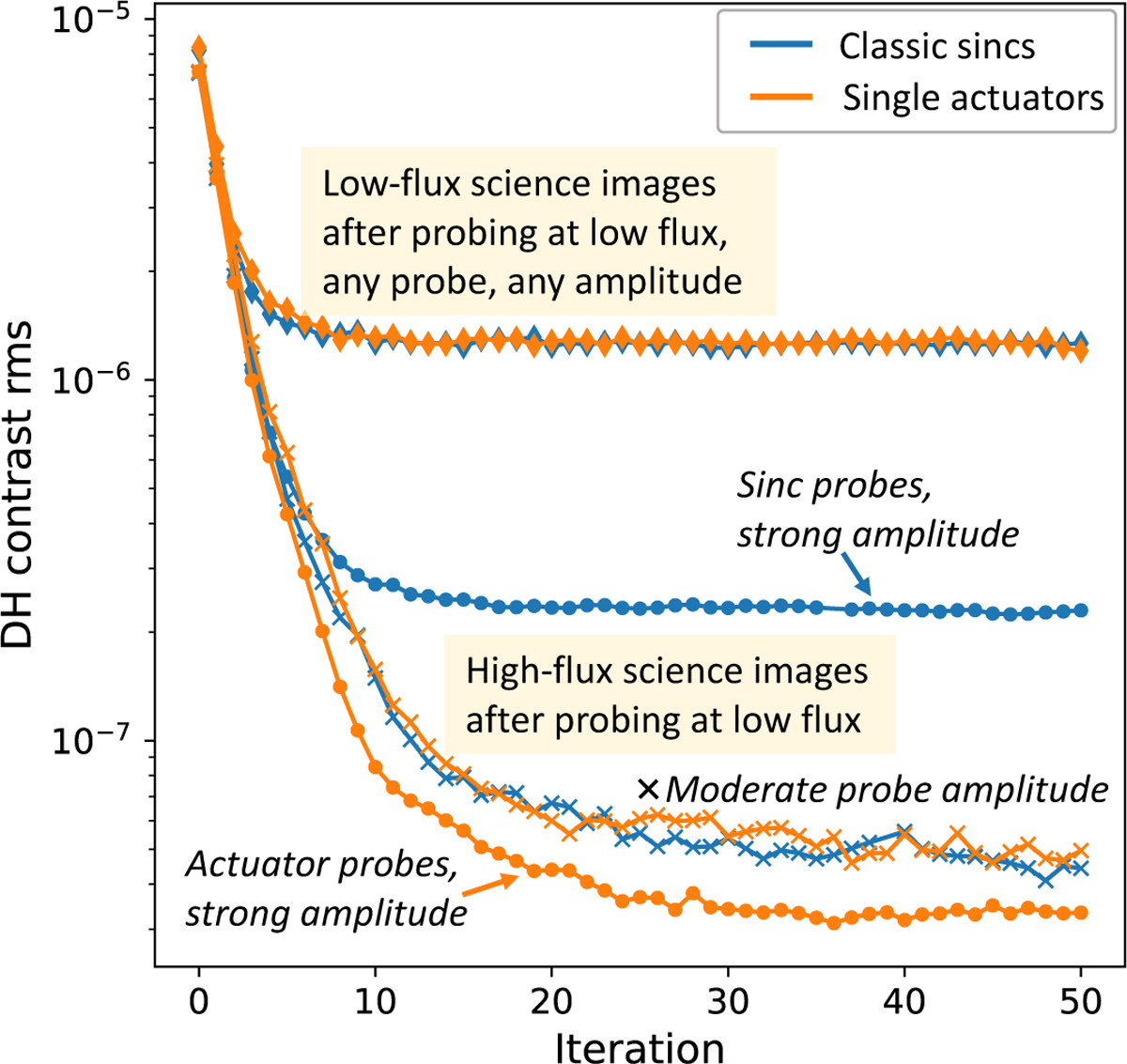Fig. 15

Download original image
Evolution of the DH contrast rms as a function of iteration for different probe shapes and amplitudes estimated at low flux, and measured at high flux in experiments on THD2. The diamond markers indicate the noisy DH contrast measured during closed-loop control at low flux, where the contrast bottoms out at the detector’s noise floor of 1.3 × 10−6. The crosses and circles represent the effective DH contrast measured a posteriori at high flux in an open loop, corresponding to DM commands obtained from low-flux runs with moderate and strong probes, respectively. Classic sinc and single-actuator probes are compared, showing that strong-amplitude single-actuator probes achieve faster convergence to 5 × 10−8 contrast compared to other configurations. The results demonstrate the advantage of strong probes in speeding up the correction process under low-flux, noisy conditions, particularly for fainter stars.
Current usage metrics show cumulative count of Article Views (full-text article views including HTML views, PDF and ePub downloads, according to the available data) and Abstracts Views on Vision4Press platform.
Data correspond to usage on the plateform after 2015. The current usage metrics is available 48-96 hours after online publication and is updated daily on week days.
Initial download of the metrics may take a while.


